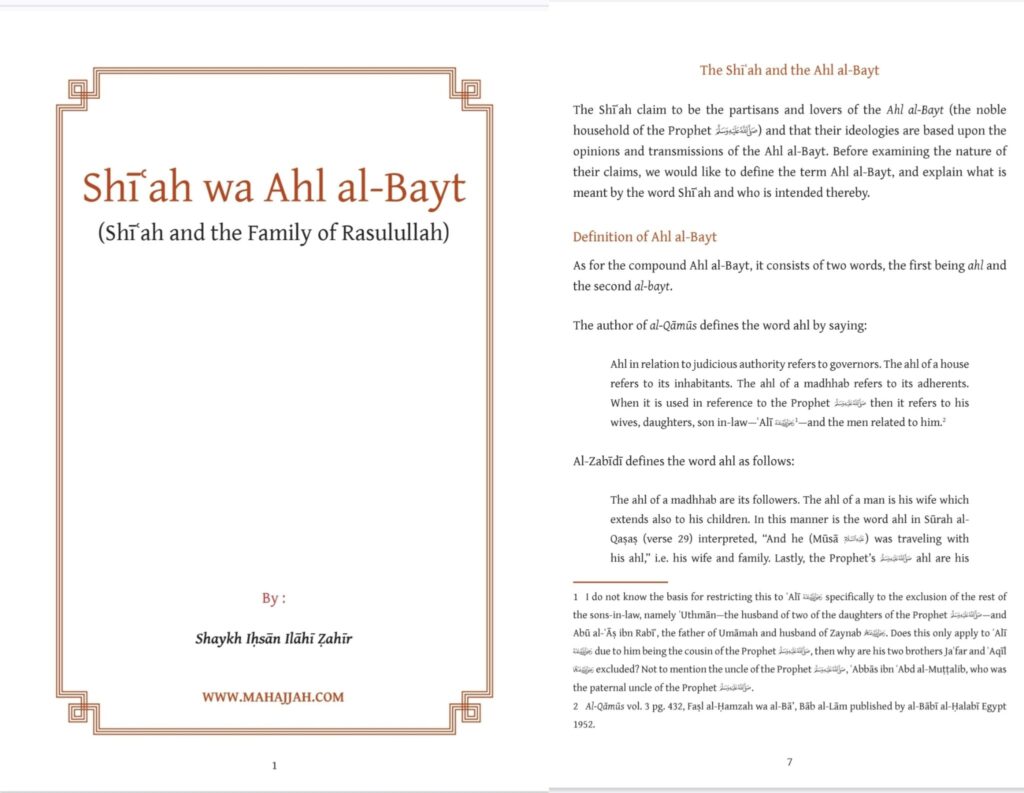Refutation One
Zahir’s tampering with a text to prove his argument;
At the core of Ẓahīr’s project lies his repeated violation of research ethics, most notably his resort to tadlees (deception). Tadlees is the deliberate manipulation of information, through omission, distortion, or selective quotation in order to mislead an audience. In Ẓahīr’s case, this was no accident; it was a calculated strategy to reconstruct reality around his sectarian agenda. He was not merely careless with sources: he weaponized them. This section of the website will focus on this. We will inshallah slowly add articles to it as we and when Allah (swt) affords us, the ability to do so.
-
Tampering with Narrations to Shore up His Sectarian Agenda
Shaykh Iḥsān Ilāhī Ẓahīr employed various deceptive methods in his works, which exceeded the boundaries of reason and logic, reaching absurdity and falsehood. His aim was solely to distort the truth and present a completely different image of the Shiʿah school of thought, one that was far removed from the actual reality, in order to turn people away from it.
One of the clearest examples of Ẓahīr’s distortion of foundational sources is his manipulation of the Arabic term ahl, a word central to Qur’anic interpretation and theological discourse, particularly in debates over the identity of Ahl al-Bayt. In the authoritative lexicon Tāj al-ʿArūs min Jawāhir al-Qāmūs, Al-Zabīdī draws a crucial distinction between literal and figurative uses of the term:
الْأَهْلُ لِلْمَذْهَبِ: مَنْ يَدِينُ بِهِ وَيَعْتَقِدُهُ، وَمِنَ الْمَجَازِ: الْأَهْلُ لِلرَّجُلِ: زَوْجَتُهُ، وَيَدْخُلُ فِيهِ الْأَوْلَادُ
The ahl of a madhhab are those who follow and believe in it. Figuratively ومن المجاز, the ahl of a man is his wife, and this includes his children.
The phrase ومن المجاز figuratively is decisive. It explicitly establishes that applying ahl to one’s wife and children is not literal, but context-dependent.
Ẓahīr, however, deliberately erased this term in his book Shia and Ahl al-Bayt, rendering it as:
The ahl of a madhhab are its followers. The ahl of a man is his wife which extends also to his children.
(Shīʿah wa Ahl al-Bayt page 7)
https://ar.lib.eshia.ir/86657/14/36?utm_source=chatgpt.com

By removing figuratively, Ẓahīr presents the meaning as literal and inherent. This subtle but deliberate distortion directly affects the interpretation of verses such as:
